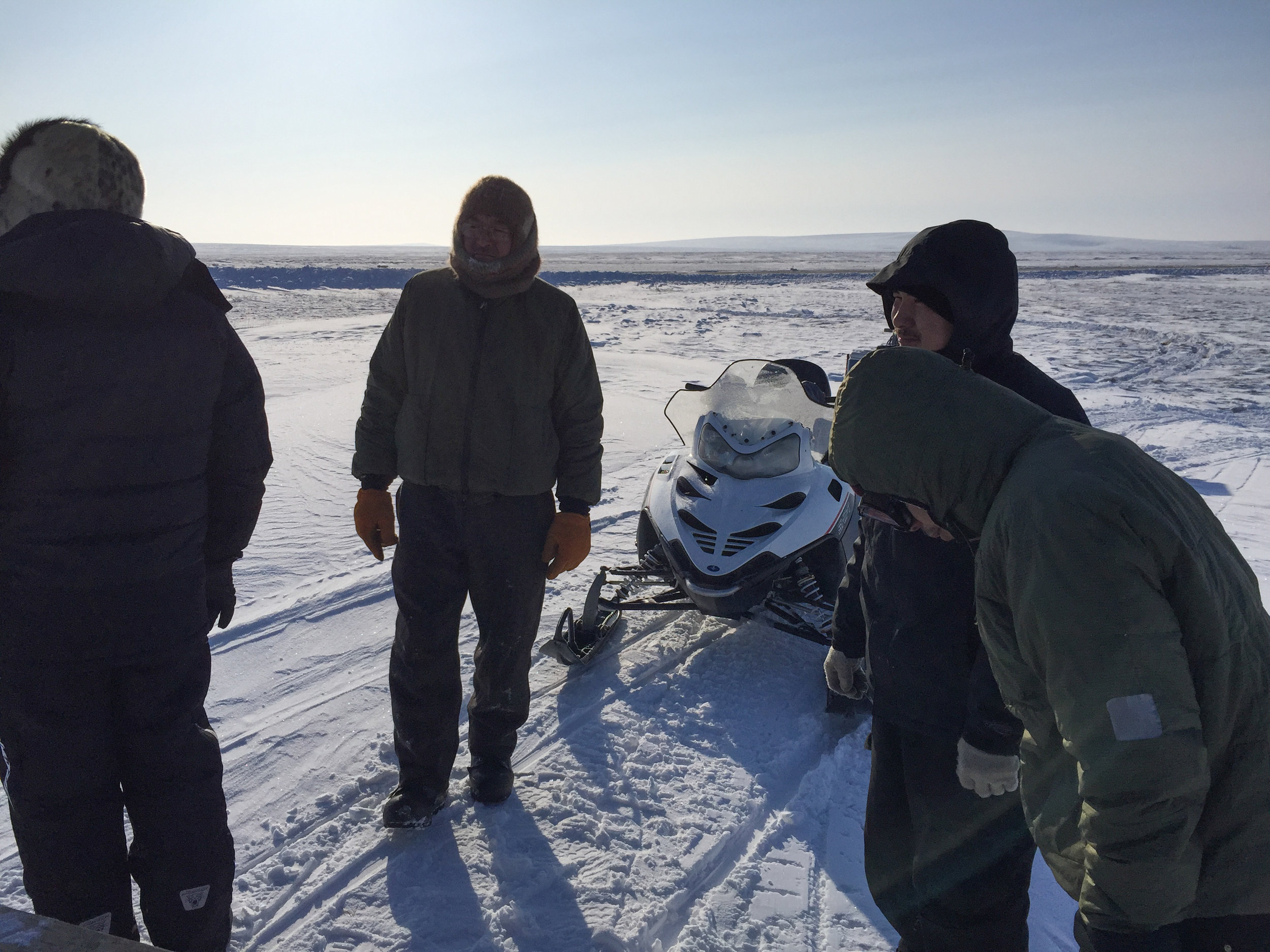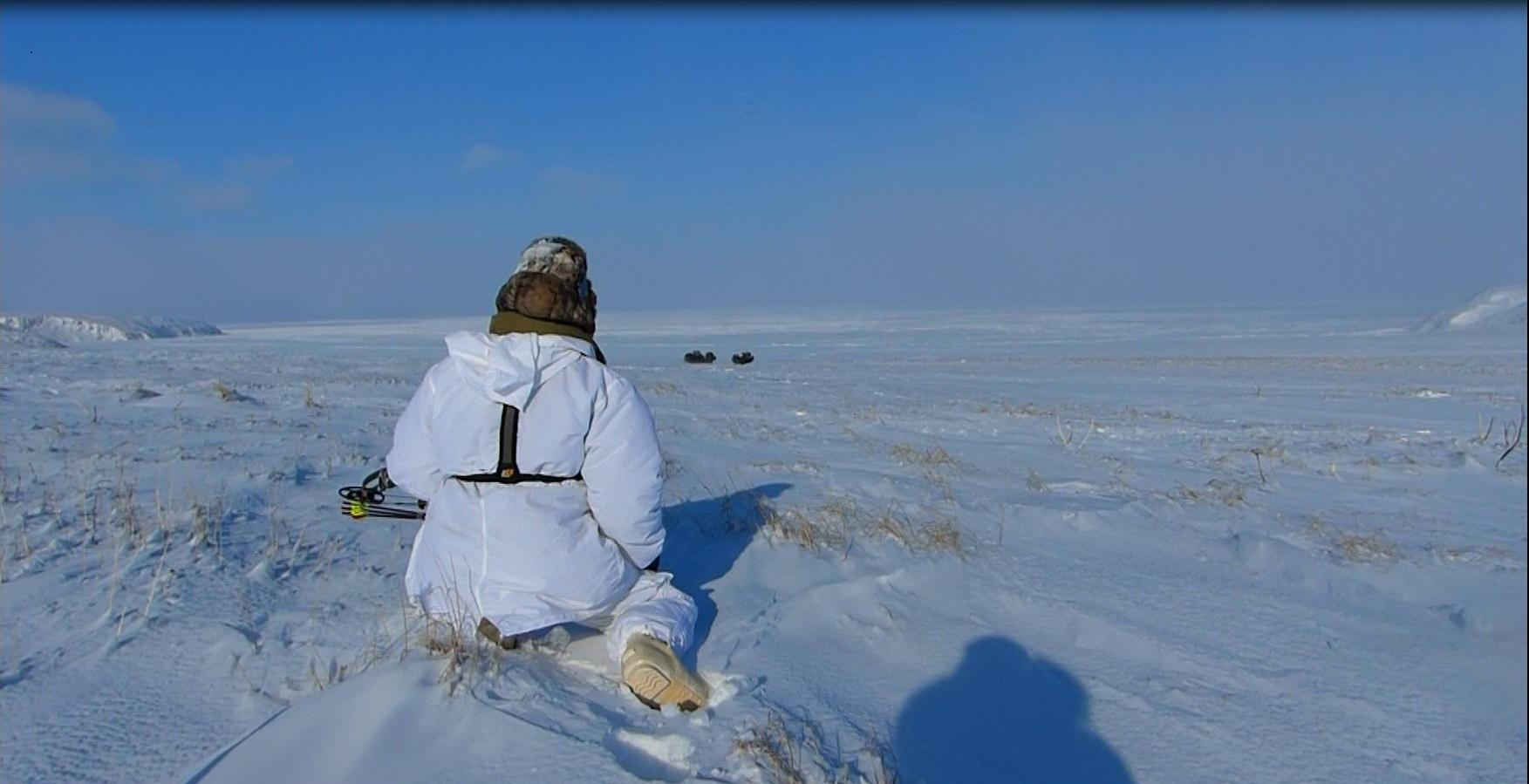Ice Age Remnants
by Nate Kalish
The wind bit my cheeks as I stepped off the Cessna Caravan, into a world few will ever have the opportunity to experience. After three days of travel from my home in Fairbanks, Alaska, I had finally arrived in Mekoryuk, the only remaining village on Nunivak Island. The journey was only supposed to have taken eight hours, but alas, winter travel in the remote ends of Alaska proved to be precarious once more. Even though Fairbanks often gets significantly colder than the negative ten degrees it was that morning, the howling twenty to thirty mile per hour winds that swept off the Bering Sea Ice cuts through the layers in a manner that is hard to adequately prepare for. The anticipation was beginning to build, as I had one of the most sought after tags in Alaska in my pocket, and just seven days off of work to accomplish the feat — three of which had just been wasted. As I consolidated my luggage, my transporter, Abe David, pulled up next to the plane with his snowmobile.
“Are you ready to go get your muskox?” Abe inquired through his thick Cup’ig accent.
“You have no idea.” I replied.
“Well, with any luck, the weather will hold off, and we can get out on the ice tomorrow.” He said reassuringly.
The weather didn’t hold off. I sat and visited with Abe’s family for two more days, learning about the culture and the history of the island, eagerly awaiting the opportunity to pursue what I had come to the ends of the world for.
On the sixth day of my seven-day hunt, the weather finally cleared up. Abe and his son loaded up the sleds as I gathered my pack and secured my bow. We had agreed on an area on the Western portion of the island, a once inhabited village called Nash Harbor.
The sun shined and the wind had subdued itself to the minor inconvenience of ten miles per hour. I wore my military issue ‘over-whites’; bow hunting on this open tundra would present a challenge, and I would need every advantage I could gain. We set off on the thirty-five mile ride to the western part of the island, where I hoped my muskox would be. With only two days remaining, I couldn’t afford a mistake. As we ventured to the west, I began to lose feeling in my hands and face. The wind steadily began to increase, and I began to question whether it had been a wise decision to attempt to fill such an elusive tag with a bow. After about three hours of travel, Abe pulled his machine off to the side of mine and said, “This is Nash Harbor”.
Prominent bluffs loomed over the Bering Sea Ice, staring in all their majesty towards the west. The area we stood used to be one of the many villages on the Island, abandoned for nearly one hundred years. I crossed the rolling hills of the tundra with excitement, each crest bringing the promise of what I had journeyed so far to find. Then, in an instant, through the white haze of blown snow, appeared three black spots on the horizon. I began to wave my arms violently at Abe and John, a rifle hunter who had arrived in camp two days after me, signalling for them to stop so I could start glassing. I reached my half-frozen hand into my pack and secured my spotting scope and tripod. I then snagged two hand warmers, which I promptly stuck inside of my gloves. If I was going to pull this off, I knew I would need my body to be functioning properly, which it currently was not. I began to focus my spotting scope on the big black dots that stood in perfect contrast to their pristine white backdrop. I needed to see if I could distinguish whether a bull was in the group. The most apparent way to distinguish between a bull and cow muskox is the presence of a horn boss. A mature bull will wear a mass of white horn across the top of its skull that will seem to fuse together in the center, with about a fingers width between the sides of the boss. Female muskox will have tufts of curly white hair between their horns, which generally will have less mass. I recite these tips I had studied in my head, as the first muskox came into view. “Well? Is there a bull in there?” John asked with excitement.
It had been predetermined that since I had been in camp the longest, and because I was bowhunting, that I would get the first right of refusal between the two of us. That being said, I had promised to be as intelligent in my stalks as I could to try and set John up for success; days of good weather were few and far between, and we did not know when we would be able to get back out to get him his bull.
“The one facing us is definitely a bull” I replied. “The other two are facing away and I can’t tell.” The gusting wind made it extremely difficult to focus through my spotting scope. I wiped my eye and quickly refocused on the bull; knowing it would be just moments before they began to tear up again. I saw one of the features I had been told was commonly found in more mature animals; black horn tips. “John I think we had better go get a closer look at these.”
They were bedded down in a draw, between one of the inland bluffs and the cliffs overlooking the sea ice. I began to formulate the plan for our stalk. I took one more look at the topography as John inquired, “What do you think we should do?” I needed to think of the best way to get close enough to them to get a good look, without spooking them further inland.
“I think if we take the sleds around the backside of the bluffs, we can head closer to them on foot. If we do that we limit their options, we will be between them their way of escape. If blow my stalk they will have to either run towards you or back towards the cliffs. What do you think?”…“Sounds like a plan to me, Nate.” I could hear the excitement building in his voice; this hunt had been twenty years in the making for John.
We set off to the backside of the ridge, leaving Abe behind, his role as a transporter was complete for now. It was up to us to make this hunt a success. We made a wide circle away from the muskoxen to ensure they would not become suspicious. We disembarked from the snowmachines halfway up the bluff, about 1500 meters from the last known location of the group; out of sight and hopefully off of their minds. We side-sloped the mountain cautiously, making sure to stay well below the crest. There was a rocky spur between us and the muskox, concealing our movement. I crawled up the back side of the spur, dropped my pack, and secured my spotting scope once more. I turned back to John, “I’m going to peak over and make sure they didn’t move right on top of us.”
I slowly crawled over the spur, careful to not silhouette myself, and set up about five meters down from its crest. The group had moved closer to us. They were now a mere 600 meters away. They had moved into a saddle between the ridge and the cliffs, with a new means of escape; a valley to the south that wrapped around the ridge. I knew I would have to incorporate that valley into my stalk. As I began to study the group, it became abundantly clear that this was a “bachelor group”; three large bulls. I had studied very diligently to distinguish between an adolescent male and a mature female, but there was no question with any of these. “John, you had better come take a look at this.”
John slowly moved over and began to study the bulls. “Which one do you want?” John asked. Of the three bulls, the one closest to us was definitely the oldest. From the greyed hair on his face to the suspicion in his mannerisms, it was clear he was in control of the group. His right horn was snapped about halfway down from the boss. This being a once in a lifetime hunt for me, I deviated from my normal feelings on the matter; always shoot the most mature animal you can find. “The two in the back are both solid bulls,” I said, “The one closest to us is ancient, but he has a broken horn. I’m going to try for one of the two in back. Whichever one presents a shot first, I’ll put an arrow in. I’m going to come up from the valley to the left, if they spook, they should run straight this way.”
I walked back over the back side of the spur and down to the valley floor. The rolling hills of the tundra valley masked my movement. I remembered my reconnaissance training — they had taught us that when you are moving into an objective, you cloverleaf. You do your sideways movements from outside the view of the target, and head straight towards it using as much concealment as you can. It is much harder to detect someone moving straight towards you than someone moving perpendicular across your field of vision.
With that in mind, I took a knee behind a snowbank, dropped my pack and headed right for the group; as low to the ground as I could. The stalk terrain allowed me to move fairly quickly, and after about twenty minutes I had covered 400 meters. The wind was now gusting at about thirty miles per hour, into my face. I knew this was good for me, in that they would not smell me, but it would present significant challenges for the shot. I needed to get as close as I could. The stalk continued cautiously, I was now inside of 20 meters. I looked up, and the herd bull was staring right at me. He was very aware of my presence. He had put himself between the other bulls and I. As he made eye contact, I went very still. The bull made his frustrations known, and began to rake his horns on the ice; this was as close as I was going to get. It was now a waiting game.
A bull began to step out, and I came to full draw from a knee, but just then the herd bull took another step forward, blocking my shooting lane. He became more aggressive with every second. I had to make something happen. I slowly sidestepped on a knee, trying to find a clear shot in the mass of hair, quivit, and horn. A shoulder of one of the back bulls finally moved forward and an arrow struck its mark; passing through both lungs and lodging itself in the hair of the bull’s opposite side. The bull ran in a circle in angst behind his companions. I quickly nocked another and arrow, as the bull had not expired. He presented a second glimpse of his vitals, and I released a second arrow behind his shoulder. In an instant it had fallen, not more than a few yards from where it was struck by the original arrow.
I was in awe at the surreal experience that had just transpired. As I watched this Ice Age remnant take his final breaths, I was overcome by my surroundings. “What an amazing animal, to be able to thrive in such a brutal landscape.” I thought to myself. As my moment of reflection passed, the remaining two bulls ran up the hill to John, as we had hoped they would do. Shortly after, I heard the report of John’s 35 Whelen ring across the tundra. Although the hunt was over, the work had just begun. Six hours and three knife blades later, we loaded our hides, horns, and deboned meat into the sleds to embark on the three-hour ride back to town.
Hunting muskox on Nunivak Island is more than a hunt; it’s a unique cultural experience that anyone would be lucky to endeavour upon. My time spent with the Cup’ig was a rewarding gaze into a life that revolves around subsistence, a life that has become as remote in this day and age as the island itself. The story of the muskox in Alaska has been a tumultuous one. From the brink of extinction in the state to the thriving population that now exists on this island in the Bering Sea; the State of Alaska, through the stewardship of the Cup’ig people, has written one of the great conservation success stories of the century. I encourage you all to be a part of it.
Editor’s Note:
We’d like to thank Adam Janke, Editor in Chief of The Journal of Mountain Hunting and host of Beyond the Kill podcast, for allowing us to re-publish this piece that originally appeared here.






